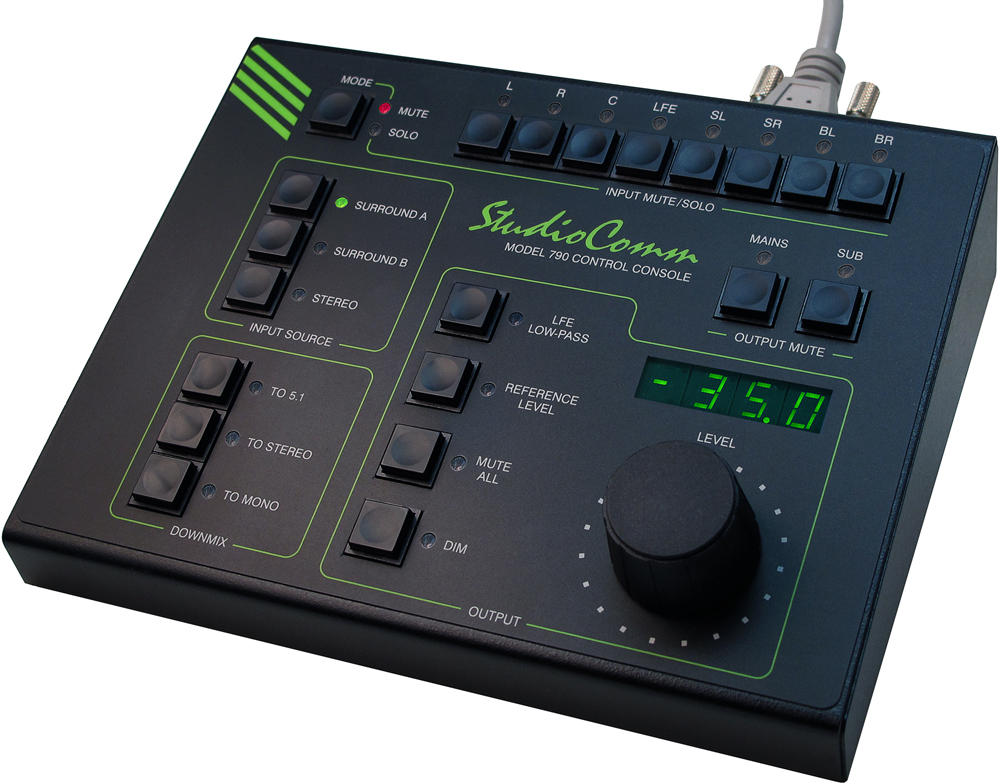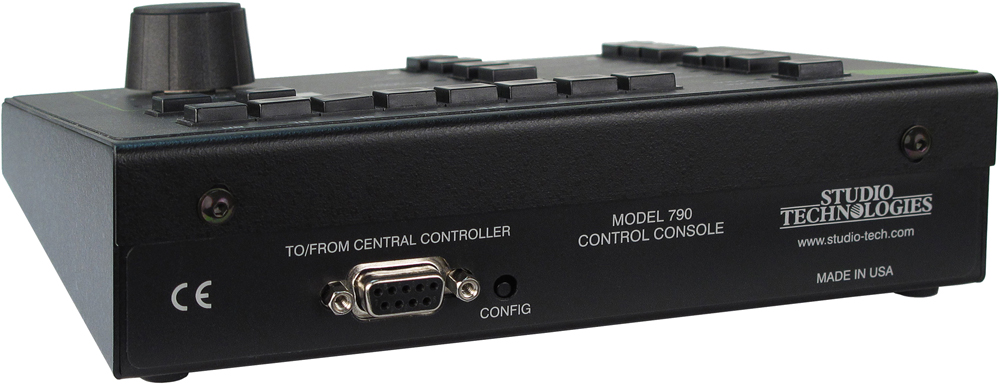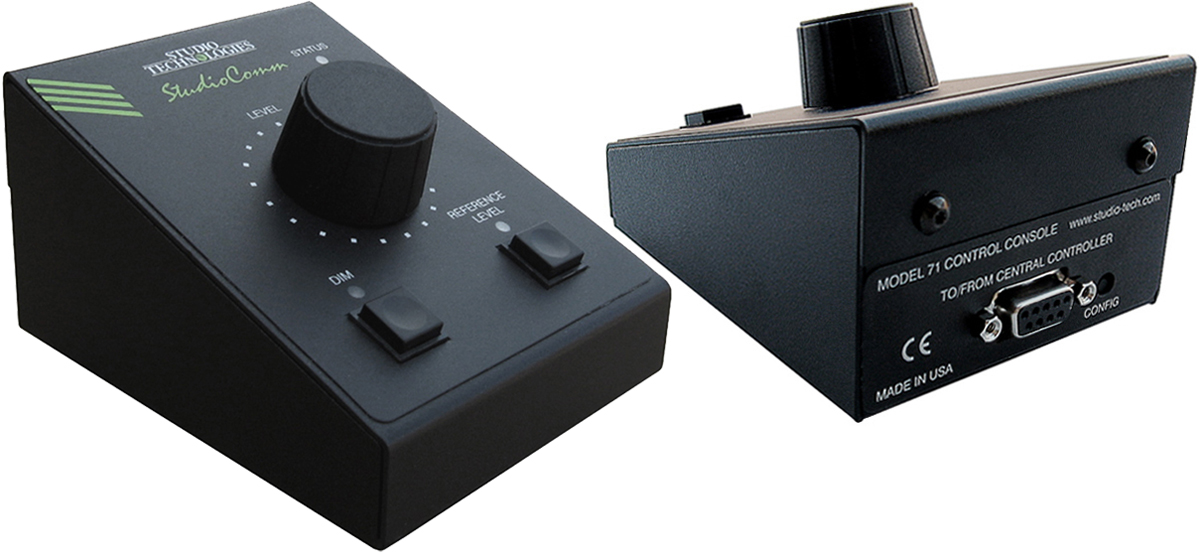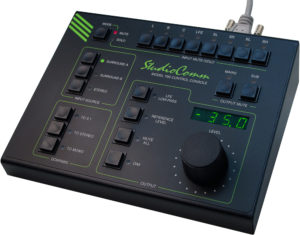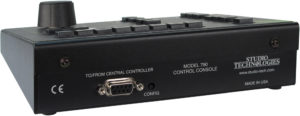The Model 790 provides three buttons and associated LEDs for selection of the source to be monitored. The choices are the two surround inputs and the stereo input; only one source can be monitored at a time. It's interesting to note that while the surround inputs have an LFE channel associated with them, the corresponding post-fader monitor output channel is designated as subwoofer (SUB), rather than LFE. This terminology was selected to highlight the fact that this output channel may include more than just LFE content. The bass management function, if enabled, will redirect low-frequency energy from the main channels, combine it with the contents from the LFE input channel, and route the combination to the post-fader monitor output's subwoofer (SUB) channel.
An LFE low-pass filter function is provided as a means of checking the audio content in the LFE channel of a selected surround input. The user can enable and disable the function as required, helping to ensure that the proper signals are being mixed to the LFE channel. Having the correct audio content in the LFE channel can be critical as the LFE channel is typically band-restricted during distribution.
The post-fader monitor output levels can be controlled by way of a large, easy-to-use rotary control. The control, actually a digital encoder, allows level selection in precise 0.5-dB steps. The auto mute all function causes the post-fader monitor output channels to automatically mute whenever the output level control reaches maximum attenuation. Using the reference level function, the post-fader monitor output levels can be set to a pre-configured value. This is provided for audio-with-picture applications that require a specific monitor output level. The reference level is easily configured by taking an electronic "snapshot" of the desired monitor output level. For user confirmation, the 4-digit LED display will show the level of the post-fader monitor output channels. To match the needs of a facility, the display can be configured to show either the attenuation level or the sound pressure level (SPL).
The dim function allows the post-fader monitor output level to be reduced by a fixed dB amount. The dim level is configured from among four available values. A mute all function allows the post-fader monitor output channels to be simultaneously muted. The input mute/solo section allows an input channel to be muted or monitored as desired. Multiple channels can also be simultaneously selected for muting or "soloing."
Two output mute functions are also provided. One button allows the seven main channels of the post-fader monitor output to be muted. A second button allows the subwoofer (SUB) channel of the post-fader monitor output to be muted. The output mute functions, along with the input mute/solo function, allow a user complete flexibility when checking an input source and its path to the loudspeaker system. These mute and solo resources are crucial in a multichannel environment, especially when signals are passing through the bass management function.
Three downmix functions allow the selected input source to be checked for compatibility with common audio channel formats. This can help ensure that surround and stereo mixes correctly "fold down" into formats that utilize less channels than the original. Errors can be quickly identified and then corrected. The downmix functions, To 5.1 and To Stereo, apply only to the two surround (7.1) sources. The To Mono downmix function applies to the surround and stereo inputs. Several of the downmix parameters can be configured to best meet the needs of an application. The downmix functions always impact the post-fader monitor output. A configuration setting allows the pre-fader monitor output to be selected for pre- or post-downmix operation.
For flexibility, the StudioComm for Surround system is designed to easily integrate with equipment such as production intercom systems, on-air or recording tally signals, and audio consoles. Two remote-control inputs provide access to the mute all and dim functions. By providing access to these functions, talkback or slate activity from an audio console or other communications system can control the level of the post-fader monitor outputs.

